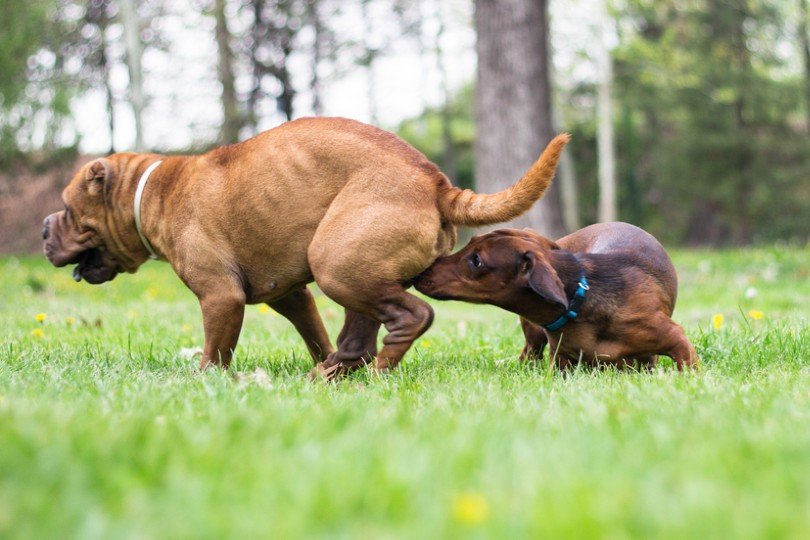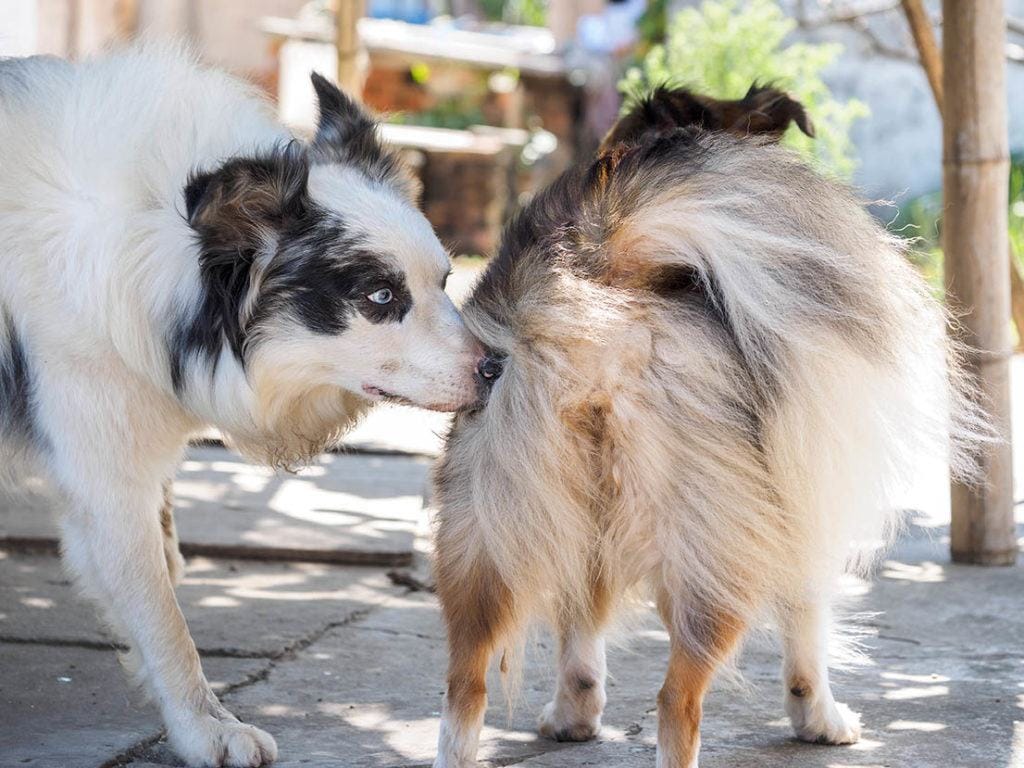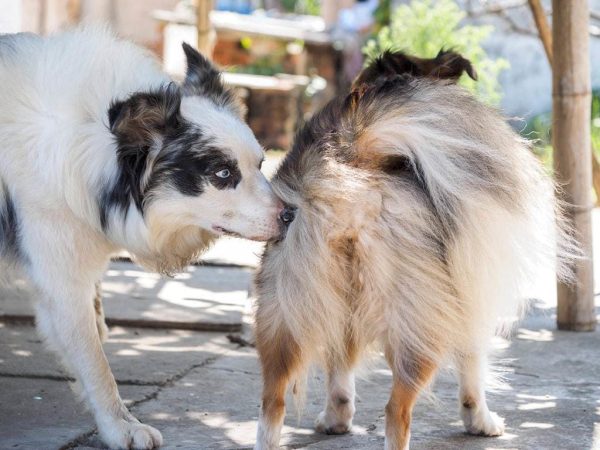Whining, crying, and pacing can all be signs of pain, but if you have an unspayed female, they might be signs of something else. About twice a year, female dogs go through the estrous cycle and experience “heat”—the time when their bodies are ready to mate.
Some female dogs do experience discomfort as part of being in heat, but it isn’t an inherently painful process. Many of the symptoms of heat are cries for attention from male dogs instead. However, giving your dog some extra love and comfort during this time is never a bad idea.
What Does It Mean to Be in Heat?
Unlike humans, dogs are only able to become pregnant a few times a year. Female dogs’ reproductive cycle is called the estrous cycle, and it has four stages. The two shortest stages—proestrus and estrus—last a few weeks when put together, and usually “in heat” refers to these stages.
During proestrus, your dog’s body is preparing for mating, and she’s beginning to attract males. You might see her vulva swell and a small amount of bloody discharge. That then turns into estrus when she’s ready to mate.
The other two stages of the cycle are diestrus and anestrus. During this time, your dog’s body will recover if she doesn’t become pregnant, and she’ll go through a rest period of several months before the cycle restarts.
While your dog is in proestrus and estrus, you’ll see some pretty big behavior changes. Along with seeking attention from male dogs, she might cry, pace, fidget, attempt to mount or hump, and have changes in temperament. This restlessness is because of hormone changes that make her want to seek a mate. Most of the time, your dog isn’t in physical pain because of this despite her seeming distress.

Do Dogs Get Periods and Period Cramps?
Even though dogs can bleed as part of their estrous cycle, they don’t get periods. In human menstrual cycles, the uterine lining sheds if pregnancy doesn’t happen—that’s what causes the blood during periods. But for most types of mammals, including dogs, the lining is simply reabsorbed without a period. Female dogs bleed whilst entering the fertile stage and humans once this stage is ending.
Some dogs do bleed as part of the proestrus—that’s the first stage of your dog’s heat. This bleeding isn’t the same as a period, though, and comes from the vulva becoming swollen as it prepares for ovulation and passage of blood cells through capillaries in the uterus. There might be some pain and discomfort during this time, but it won’t be the same as period cramps. Instead, your dog will probably feel tenderness. During the whole estrous cycle, there might be some discomfort due to hormone changes as well.
How Can I Comfort My Dog When in Heat?
During heat, your dog could probably use some extra attention, whether she’s in pain or not. However, this varies from dog to dog. Generally, extra exercise and playtime can help your dog feel distracted from any physical or emotional discomfort. You should also keep unspayed males away if you want to avoid pregnancy!
If your dog becomes more aggressive during heat cycles, it might be best to give her some space. These hormone changes are temporary, and she should be back to normal within a week or two.

Final Thoughts
As you can see, if you choose not to spay your dog, you have to manage heat cycles. These cycles last throughout your dog’s whole life, although fertility does lower with age, and they can be a source of distress to both of you. But the good news is that your dog’s cries and behavior changes are due to hormone changes for the most part, not pain.
See Also:
- Do Dogs Have Periods? Vet-Reviewed Facts & FAQ
- What Are the Vet Costs for a Pregnant Dog? Price Update
Featured Image Credit: atiger, Shutterstock










